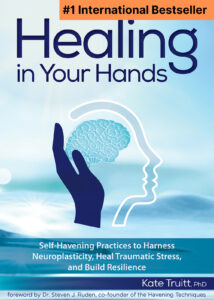Related Resources
For Suicidal Ideation
Suicide Awareness: Understanding a Brain in Crisis
Unlock the Secrets of a Brain in Crisis: Why Understanding Suicidal Thoughts Can Save Lives—Watch My Latest Video! Are you or someone you know grappling with overwhelming emotions and suicidal thoughts? Cut through the fog of panic, fear, and helplessness with my game-changing psychoeducational video.
Keep Breathing: An Evening of Resilience and Hope
I’m incredibly honored and grateful to be named the 2024 Honoree for the Matt’s Hero Award. This recognition means so much to me, as it highlights the importance of supporting teens thinking about suicide by being their “Hero” – someone who listens, provides resources, and offers understanding. In this video they feature my book, Keep Breathing: A Psychologist’s Intimate Journey Through Loss, Trauma, and Rediscovering Life.
Understanding Suicide from a Neurobiological Perspective
By Dr. Kate Truitt
When we think about suicide, it often comes with a mix of fear, sadness, and uncertainty. Whether you’ve experienced these thoughts yourself, know someone who has, or have simply been touched by the ripple effects of a loss, it’s a topic that feels heavy and complicated. In September, we take time to focus on Suicide Prevention and Awareness, shining a light on the reality of these struggles and the hope that can be found in understanding and connection.
Suicidal thoughts can be deeply frightening—for those experiencing them and for those who love them. Our brains are wired to fight for survival, so when thoughts of ending one’s life arise, it feels counterintuitive. But it’s important to remember that, neurobiologically speaking, suicide can be viewed as the brain’s final attempt to protect us from unbearable pain. It’s like an emergency exit when all other doors seem closed.
So what’s really happening in the brain during these moments, and why understanding this can change how we approach suicide prevention for ourselves, and those we care about.
Understanding the Neurobiology of Suicidal Thoughts

Our brains are hardwired to keep us alive, and the amygdala, or “Amy” as I like to call her, plays a key role in this. Amy is our survival brain, and when suicidal thoughts and feelings surface, she’s in overdrive. Imagine a brain in crisis as similar to a heart attack—it’s a full-blown emergency. During these moments, the amygdala lights up, desperately scanning for a way out, which, paradoxically, might present as suicidal thoughts. The amygdala, working with the prefrontal cortex, tries to form a plan, even if it’s not the healthiest one.
Studies show that a brain in crisis functions with 30 fewer IQ points than it does on a typical day, meaning clear thinking is not an option. This brain is overwhelmed, stretched to the max, and just trying to survive. If you’re experiencing this, know that your brain is in panic mode, not seeing the full picture. The goal is to help your brain find hope and connection in ways that keep you safe. In this psychoeducational video, I delve deep into understanding the brain in crisis.
For those of you supporting someone in crisis, remember that your loved one’s brain is simply trying to navigate through unbearable pain. It’s not about rational thought—it’s about survival. This is why holding space, listening without judgment, and helping them ground in the present moment are key steps in offering support.
Recognizing the Spectrum of Suicidal Thoughts
Suicidal considerations aren’t always about having a plan—they exist on a spectrum. From fleeting wishes like “I hope I don’t wake up tomorrow” to actively planning an attempt, all forms are valid and deserving of care. For those on the outside, it can feel just as terrifying. It’s crucial to recognize that these thoughts are the brain’s misguided attempt to regain control and agency when everything feels overwhelming.
Understanding that suicidal thoughts are a cry for help from the brain allows us to approach the situation with empathy. Instead of panicking or trying to problem-solve with logical arguments (which might not resonate when someone is in survival mode), the focus should be on creating safety, connection, and finding small steps forward. See my short video titled, Understanding Passive Suicidal Ideation for more.
Recognizing Risk Factors and Taking Action
Awareness of risk factors is crucial for preventing suicide, both for yourself and others. Here are three major factors to watch for:
Understanding the signs of a brain in crisis can be the first step in reaching out for help, whether for yourself or a loved one. Here are three major risk factors to be aware of:
- Insomnia: A lack of sleep can severely impact brain function, making it difficult to cope with stress or regulate emotions. If you or someone you know is struggling with insomnia alongside anxiety or depression, seek help immediately.
- Agitation and Emotional Dysregulation: Agitation isn’t just restlessness—it’s a deep discomfort that affects both the mind and body. A brain in this state is desperately searching for relief, which can make suicidal thoughts more prominent.
- Intense Anxiety or Panic: Panic attacks and severe anxiety can overwhelm the brain, leading to a sense of hopelessness. Immediate support is essential in these cases to prevent the crisis from escalating.
Recognizing these signs is the first step in reaching out for support. Whether through professional help, crisis hotlines, or trusted friends and family, the aim is to offer the brain multiple ways to cope and find safety.
The tools in my book, Healing in Your Hands offers ways to address these risk factors by promoting self-regulation and providing actionable steps to calm the brain’s response to stress.
Finding Hope and Connection
If you or someone you love is facing a suicidal crisis, remember that it’s not a failure or a sign of weakness—it’s a signal that the brain is overwhelmed and searching for a way out. By understanding the neurobiological underpinnings of these thoughts, we can respond with compassion rather than fear. Hold space for the pain, offer grounding techniques, and most importantly, reach out. There are incredible resources and supportive communities ready to help.
Moving the Conversation Forward
In line with this, I’m incredibly honored and grateful to be named the 2024 Honoree for the Matt’s Hero Award. This recognition means so much to me, as it highlights the importance of supporting teens thinking about suicide by being their “Hero” – someone who listens, provides resources, and offers understanding. In the following video, they feature my book, Keep Breathing: A Psychologist’s Intimate Journey Through Loss, Trauma, and Rediscovering Life.
The work of the Matthew Silverman Memorial Foundation is about creating safe spaces for these crucial conversations. It is a huge honor and deeply inspiring to have the opportunity to continue this work to save lives. My team and I, along with everyone involved in this organization, are dedicated to this mission.
We all suffer and experience pain, sometimes leading us to dark, scary places. The Foundation brings these conversations to the forefront, providing a space for healing and connection. When we know we’re not alone, there is hope. Within connection, there is hope and the opportunity for healing.
Additional Resources
Additional Resources:
National Suicide Prevention Lifeline: 1-800-273-TALK (8255)
Suicide Prevention Text Line: Text HOME to 741741
The Trevor Project – LGBTQ Suicide Hotline: 1-866-488-7386
American Foundation for Suicide Prevention Support Groups: https://afsp.org/find-a-support-group/
Alliance of Hope for Suicide Loss Survivors: https://forum.allianceofhope.org/
References
- Gonda, X., Dome, P., Serafini, G., & Pompili, M. (2023). How to save a life: From neurobiological underpinnings to psychopharmacotherapies in the prevention of suicide. Pharmacology & Therapeutics, 244, 108390. https://doi.org/10.1016/j.pharmthera.2023.108390
- Vargas-Medrano, J., Diaz-Pacheco, V., Castaneda, C., Miranda-Arango, M., Longhurst, M. O., Martin, S. L., Ghumman, U., Mangadu, T., Chheda, S., Thompson, P. M., & Gadad, B. S. (2020). Psychological and neurobiological aspects of suicide in adolescents: Current outlooks. Brain, Behavior, & Immunity – Health, 7, 100124. https://doi.org/10.1016/j.bbih.2020.100124
- Van Heeringen, C., & Marušic, A. (2003). Understanding the suicidal brain. The British Journal of Psychiatry, 183(4), 282-284. https://doi.org/10.1192/bjp.183.4.282











